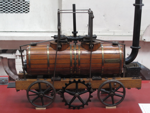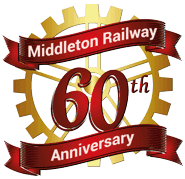Projects
After the Fire
In the early morning of Sunday 15th July 2018, our neighbours at Jewson's builder's merchants suffered a major fire. We suffered too, and this page gives explains how, and what we did about it.
What Happened
Early on the Sunday morning, Jewson's builder's merchants suffered a major fire, as the result of an arson attack. This fire gutted their site, and also forced the evacuation of residents of Lake Terrace, on the other side of their site.
The fire also affected the railway, in various ways.
- Our pallet van (code name "Palvan") caught fire, and was partly burnt out, along with many of the tools for work on the track that were stored in it.
- Our ballast wagon (code name "Dogfish") suffered major damage to its paintwork.
- The side of our Engine House building was scorched, and seemed likely to need repairs.
- The front of our platform shelter was also scorched, and needed some repair.
- Some external wiring was damaged, and in particular the PA system which served our platform was destroyed.
- On police advice, we had to abandon the operation on Sunday of our special event called "Leeds Diesels on Display".
By Monday 16th July we were able to start making plans for repairing the damage, and in particular for rebuilding the Palvan and repainting the Dogfish wagon. To give you an idea of what would be involved, the two photographs below show the Palvan running on the Saturday as part of the gala event, and as it was on Sunday morning.
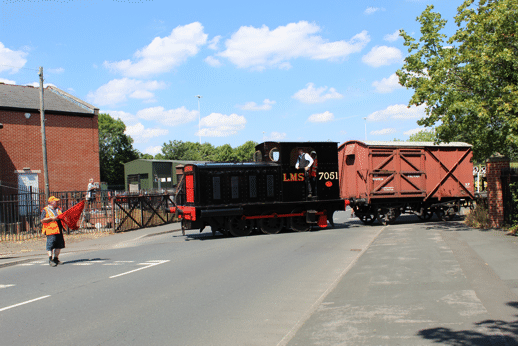
The Palvan in a train crossing Moor Road

Fire damage to the Palvan and the Dogfish
Fortunately we found that the chassis and the steel framework of the Palvan had suffered very little damage, so that the main work in repairing it would be replacement of the wooden panelling, including the floor, the doors and the roof. This would, though, involve significant costs, which were estimated at about £15,000, of which only £4,000 would be covered by the insurance.
By contrast, the only real damage to the Dogfish was the scorching of the paintwork on the body, and the insurance would cover the work of repainting it.
We therefore set up an appeal for donations towards the cost of repairing the fire damage, and in particular the cost of rebuilding the Palvan. That appeal raised several thousand pounds, but now that the recovery work has been completed it has been closed.
Repairing the Damage
We contacted our insurers, who appointed a loss adjuster, and with his help we were able to put together a claim for the damage. In particular, we were quickly able to start the process of replacing the tools that had been damaged in the Palvan.
To repaint the Dogfish wagon we had to decide on a livery, and since we were preparing for our "Last Coals to Leeds" event the obvious choice was to paint it in NCB livery, and give it the (fictitious) running number MB 150, as shown in the picture below.
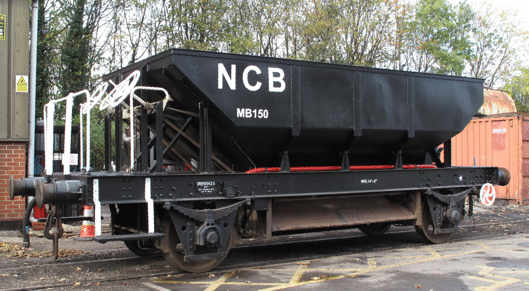
The Dogfish repainted in NCB livery
We replaced the PA system for the platform and repaired the major damage to the buildings, and this just left as the main item the restoration of the Palvan. After negotiations with various firms that can do this kind of repair, we appointed Stanegate Restorations of Haltwhistle to do the work, and the picture below shows the van leaving our site at the beginning of June 2019.
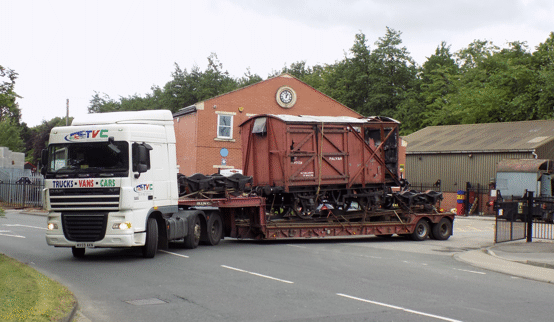
The Palvan leaving for Stanegate Restorations
They made good progress with the work, and the two pictures below, taken at the end of July, show the van with some of the new panelling in place.
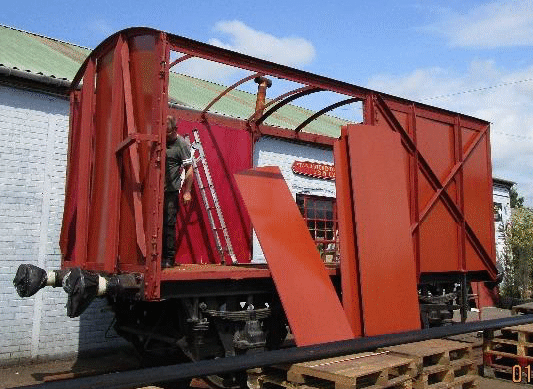
Work in progress on rebuilding the Palvan
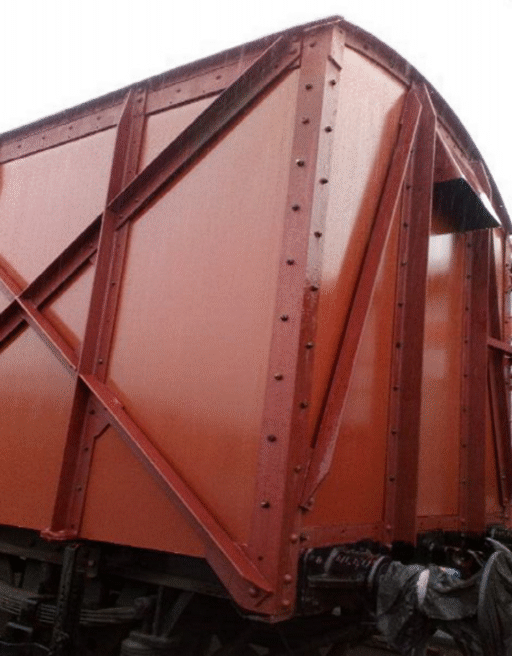
New panelling on the Palvan
Other work that was having to be done on the van was to refurbish the floor plating, and to construct new wooden roof sticks to support the metal ones that are still in place. The two pictures below show the progress with these components, also at the end of July.
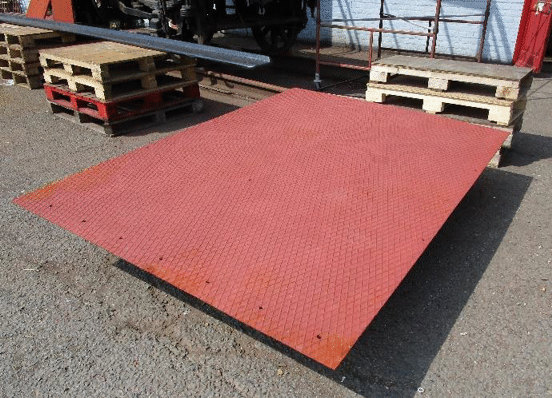
A refurbished floor plate
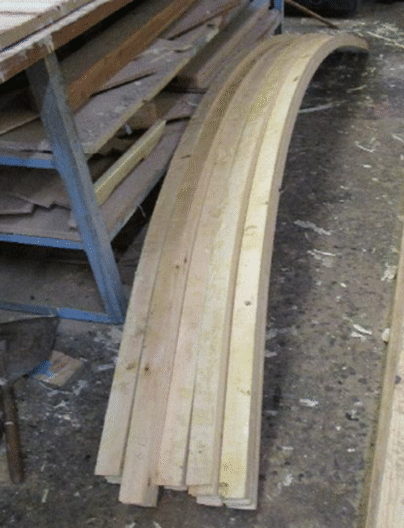
New wooden roof sticks
By early December most of this work was finished, apart from the external lettering and some internal painting. During December it was agreed that it would suit both parties for the van to return to Middleton and for the final bits of painting to be done here, and so the van was actually transported back here early in January 2020. It was accommodated in the display hall, and the picture below shows it soon after it had arrived.
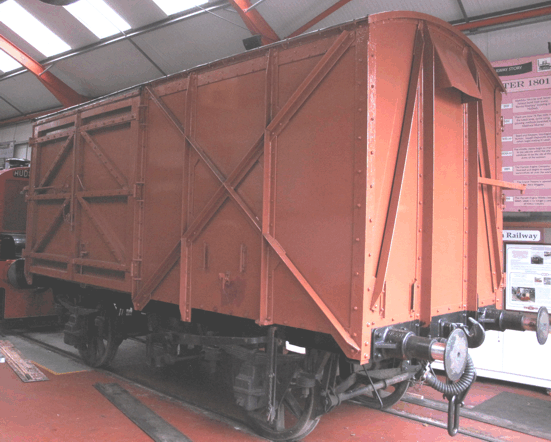
The Palvan in the display hall, soon after its return
In February a team from Stanegate Restorations travelled down here for two days to do the lettering, after which we did the internal painting. The picture below shows the van outside the main workshop, soon after all of this work had been completed.
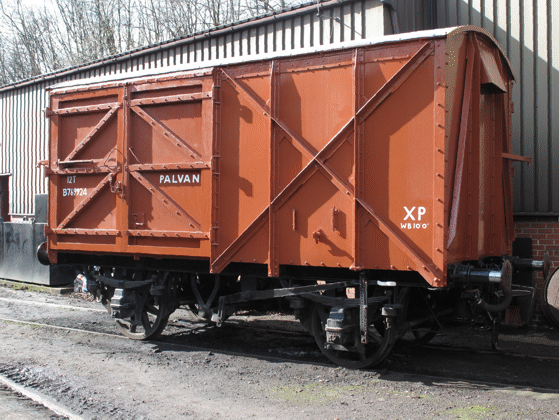
The Palvan outside the workshop, with the restoration complete
More Information
Other pages provide more information about:
Last Coals to Leeds
May 1968 was a significant month in the history of the Middleton Railway, as it saw the closure of Middleton Broom Pit, after more than 200 years of mining coal and transporting it into the centre of Leeds. To mark the 50th anniversary of this closure, the railway ran a special event on Saturday 29th and Sunday 30th September 2018, but activities surrounding this event did not just run for that one weekend. Rather, it was the focus of a much larger project, which was aimed at providing a proper commemoration of this change in the industry that had been key to this area of Leeds.
A separate page gives more details of this special event, and this page describes the rest of the project that surrounds it. This project was funded by Leeds City Council through its Community Wellbeing Fund, and the logo shown below was created specially for the project, in order to recognise these contributions.
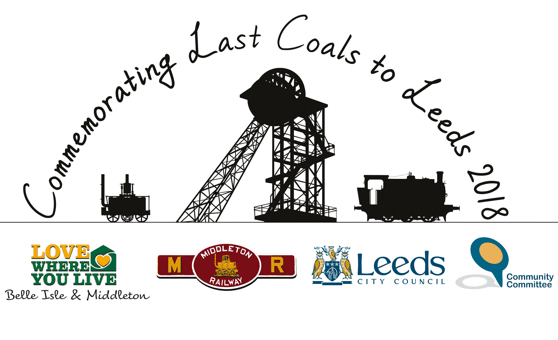
In addition to the event, there were four main strands to the project, as follows.
- Producing books to describe the history of coal mining in the area, and going into local primary schools to distribute these and to explain this history to the pupils.
- Assembling an exhibition of photographs recording the history of the pit, and arranging for this to be displayed at various local venues.
- Collecting memories of the pit from those who worked there, or who lived in the area.
- Creating and installing a memorial plaque.
The Books
These were produced by the team that had written Bert's Tales of Middleton, but with additional people contributing. There were two versions of them.
- One version was aimed at primary school pupils, and was in similar style to Bert's Tales of Middleton. This was launched at an event for the schools on 14th September. Following this launch, copies of this version were distributed to the pupils at all of the local primary schools.
- The other version was much more substantial, and was aimed at the wider community. After a lot of delays it is now on sale in our shop: see this page for more details.
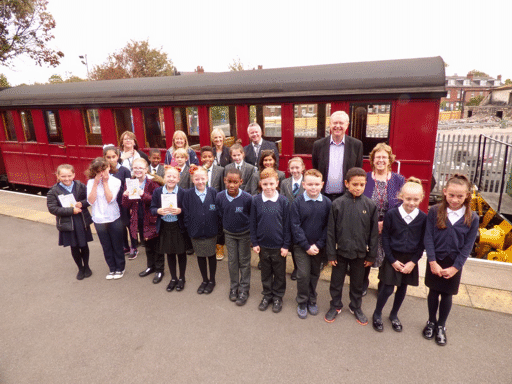
Councillors (Paul Truswell and Judith Blake), school staff, and children from Hunslet Carr and Windmill primary schools, at the launch of the books for primary schools on 14th September 2018.
Picture courtesy of South Leeds Life, and © South Leeds Life 2018.
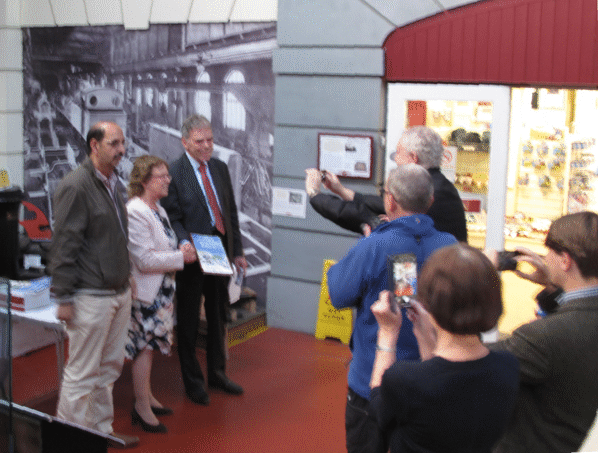
Councillors (Mohammed Iqbal and Judith Blake) and our chairman Charles Milner (the author), at the launch of Colliery Community Railway (the book for adults), on 17th September 2019.
Picture © Tony Cowling 2019.
The Photographic Exhibition
This draws heavily on available archive photographs and related material, including items from the railway's own archives. The exhibition was displayed in the railway's Engine House over the weekend of the special event at the end of September, and then during October it was at the St Georges Centre Community Hub, Middleton, and then at the John Charles Centre for Sport. It then returned to the Engine House, and currently is on display there, but may be lent out to other locations in the future.
Collecting Memories
Did you work at Middleton Broom Colliery? Or do you have a relative who did so? Can you share memories of the colliery with us?
While the project was running we had set up a special email address, so that if anyone reading this page was willing to share memories,they could email us with their contact details, so that we could compile these memories for future generations to enjoy. We have now closed down that special email address, but we would still be interested to hear from anybody with memories to share.
The Memorial Plaque
The plaque is a memorial that is dedicated to those who had worked at Middleton Broom Pit from opening to closure, and in particular to those who had lost their lives working at the Pit. The obvious place to install it would have been on the platform at Park Halt, since this is on the edge of what used to be the site of the colliery yard. Unfortunately, boards which have been installed there have suffered from vandalism to an extent that suggests that this would not have been a good location, and so the plaque was installed initially at the north end of the Moor Road site, where the railway line once continued into Leeds. It has now been relocated at the south end of the platform at Moor Road, where the trains depart to Park Halt.
The plaque was unveiled on Friday 21st September 2018, and a separate page gives more details of it and of the unveiling ceremony.
More Information
Pages about other projects:
- Raising Steam in No. 6;
- Project Phoenix;
- Building a Running Shed;
- Overhauling "Brookes No. 1";
- Conserving "Picton";
Other pages of our web site will provide more information about:
Raising Steam In No. 6
This page contains the following information about ‘No. 6’.
- A brief history of it;
- A description of the overhaul that had been started; and
- An explanation of what was needed to finish this overhaul, and why we had needed to set up an appeal for funds.
For the record, a separate page gives the details of this appeal, which is now closed.
History
‘No. 6’ was built in 1935 by R & W Hawthorn Leslie, and it spent its entire working life at APCM's Cement Works in Swanscombe, Kent, along with six similar locomotives. Here it hauled chalk from the quarry face to the factory, and loads of cement from the factory both to the main line railway sidings, and to APCM’s wharf on the Thames Estuary. The picture below shows it when working at Swanscombe, hauling a train of wagons of chalk past the tippler.
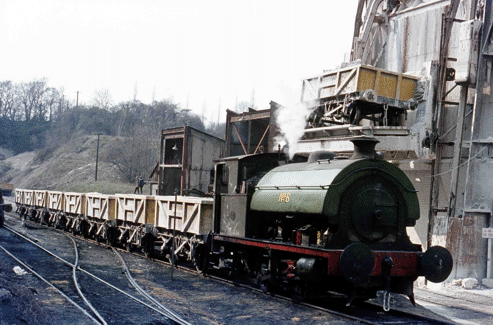
[Picture from the MRT's photo archive, taken by Ernie Brack]
In 1971, when the steam locomotives were replaced by diesels, APCM donated two of them for preservation, and No. 6 came to the Middleton Railway. It arrived on 5th June of that year, and the picture below shows it being unloaded from the low loader that had transported it to Leeds, onto the headshunt opposite the Parkside ground of the Hunslet Rugby League club.
The two sets of road wheels to the right of the picture were from the back of the low loading trailer, and once this had been jacked up then they had to be taken off to allow lengths of rail to be connected to the ones on the deck of the trailer, so as to form a ramp down which the locomotive could be run. The diesel locomotive "Carroll" (HC D631) is waiting with a runner wagon, which would be run up the ramp to couple on to the locomotive, so as to control its descent. Then "Carroll" would tow it up the gradient to Clayton's Dartmouth yard, which at that time was the railway's operating headquarters.
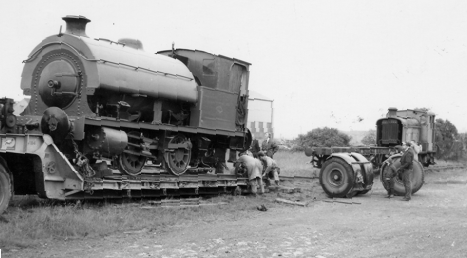
[Picture from the MRT's photo archive, taken by John Edwards]
Soon after its arrival, once the chalk had been cleared out of some of its fittings, No. 6 was able to enter service. Not long after this the picture below shows it being towed by "Carroll" along the new Dartmouth branch, which had replaced the old branch and the Parkside headshunt as part of the construction work on what is now the M621 motorway. This construction work can be seen in the background of this picture.
Quite why No. 6 was not in steam on this occasion, or was needing to be towed by "Carroll", is not clear. Presumably it had been on display for some purpose at the Moor Road platform, but we have no record of what that purpose was. One speculation is that it might have been when APCM presented us with a plaque to be fitted to the rear of the cab.
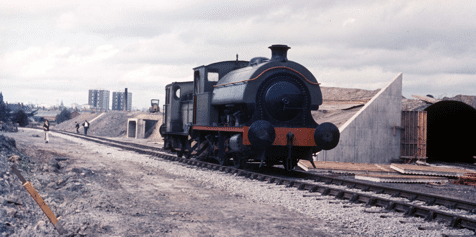
[Picture from the MRT's photo archive, taken by Keith Halton]
For the next few years No. 6 played a major part in operating the railway's passenger trains, as shown in the picture below. Here it is seen in 1972, propelling a passenger train across the footpath crossing at what is now the south end of our Moor Road yard.
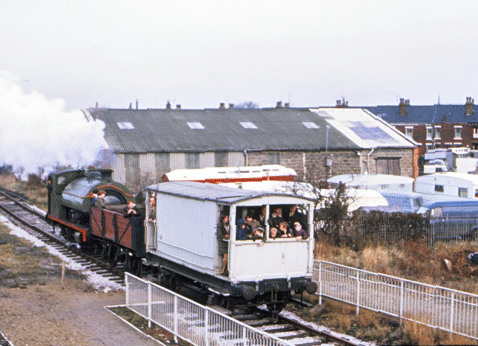
[Picture from the MRT's photo archive, taken by David Hebden]
No. 6 continued to operate until 1975, but at the end of that year it had to be taken out of service, awaiting an overhaul. For various reasons this became a long wait, but eventually its turn came in 2001, and it was brought into the workshops.
Starting the Overhaul
As with any overhaul, the first stage was to remove the tanks and boiler cladding, and the saddle tank was placed in storage on top of one of the containers in the yard. Then the boiler was lifted out of the frames, and work started on dismantling the chassis and running gear. These required a lot of attention, but by 2005 the overhaul of them had reached a stage where it was appropriate to start work on the boiler.
This, however, was also the year when the complete remodelling of the Moor Road site began, along with the construction of the Engine House building. These projects needed huge amounts of volunteer input, and so work ceased on the overhaul of No. 6. Since then its chassis has remained in the workshop, with just occasional bits of progress being made, and the picture below shows it there, underneath the lifting gantry.
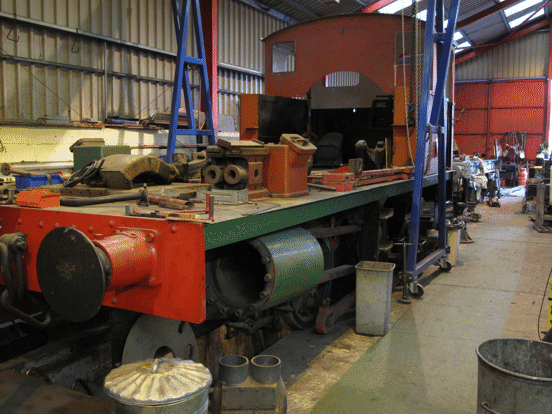
[Picture from the MRT's photo archive, taken by Tony Cowling]
Meanwhile, inspection of the boiler had revealed that some major repairs would be needed, and advice on these was sought from Gordon Newton, formerly of the boilermakers Israel Newton and Sons. He visited the railway during 2014, and gave advice not only on what work was needed, but also on how much of this our members could sensibly undertake themselves. Specifically, he identified that on both sides of the firebox sections of the outer wrapper plate would need to be replaced, because they had been corroded by the hard water when working at Swanscombe.
The first stages in replacing these plates would be to remove the stays from the affected sections of the firebox, then cut out the centre sections of the corroded pieces of plate, and finally drill out the rivets so as to remove the rest of each part of the plate. His advice was also that this was all work that our members could do, and that doing it ourselves would reduce significantly the cost of the whole overhaul, and so he gave us detailed instructions on how to do it. We did all the work that he described, and the pictures below show the boiler upside down on a trolley, with the two corroded plates removed from the sides of the firebox.
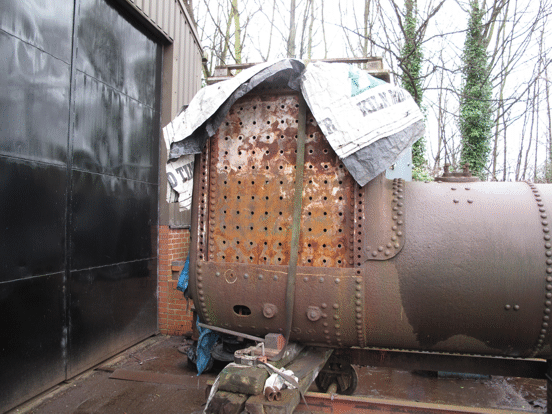
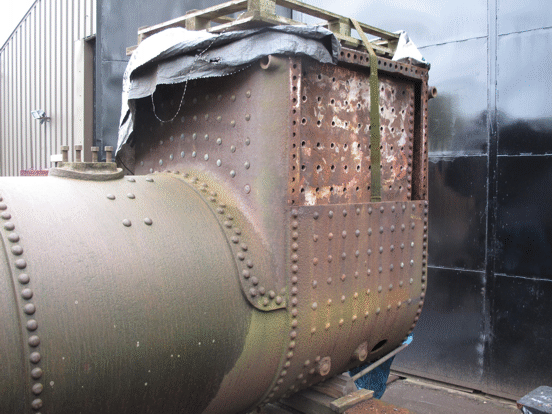
[Pictures from the MRT's photo archive, taken by Tony Cowling]
Finishing the Overhaul
Our aim was still to return the locomotive to steam by 2020, when it would be 85 years old. As a minimum this would require new plates to be made and fitted, with new stays to replace the ones that had been removed. Then a new set of boiler tubes would have to be fitted. The work might possibly have also involved replacement of some of the firebox crown stays, but fortunately this turned out to not be needed. Consequently, even though we had done as much of the work ourselves as we could, it was conservatively estimated that £60,000 would be required to do all of the work that was still needed in order to complete the overhaul of ‘No. 6’.
We therefore launched an appeal to raise the funds needed to achieve all of this, and a separate page gives more details of this appeal. We have now closed this appeal.
Meanwhile, we had re-started work on the chassis of the locomotive, and a separate page describes the start of the work to finish off the overhaul of No. 6.
The other pages that give more information about this project are therefore as follows:
- Overhaul of No. 6 Part 1, which describes the start of the work that had to be done to finish this overhaul.
- Overhaul of No. 6 Part 2, which describes the completion of the work that had to be done to finish this overhaul.
- Help Raise Steam in No. 6, which describes the appeal that was for funds to help finish this project.
More Information
Pages about other projects:
- Last Coals to Leeds;
- Project Phoenix;
- Building a Running Shed;
- Overhauling "Brookes No. 1";
- Conserving "Picton";
Other pages provide more information about:
Help Raise Steam in No. 6
For the record, this page contains the following information about the appeal to return ‘No. 6’ to steam. This appeal is now closed.
- The current progress with the overhaul project, when the appeal was set up
- What work still needed to be done;
- How you could have helped with the appeal; and
- The current progress with the appeal.
A separate page contains the following information about the locomotive itself.
- A brief history of it;
- A description of the overhaul that had been started; and
- An explanation of what was now needed to finish this overhaul, and why we had needed to set up an appeal for funds.
Current Progress of the Project
The overhaul of No. 6 (Hawthorn Leslie 3860) had become a very major project. Perhaps not as major as those overhauls that have involved constructing complete new locomotive boilers, but it was not far behind them in size and cost, which is partly why there was such a long delay before it was even started.
As explained in the separate page that describes the history of the locomotive, the overhaul of the chassis was a substantial piece of work, as it involved stripping it down almost completely, and even replacing some of the rivets that held the frame plates together. Beyond that, we had never previously had to do any work ourselves on a boiler that involved replacing parts of the platework.
For the boiler work we did as much ourselves as we were able to do, by removing the corroded sections from both sides of the firebox wrapper plate, and taking the tubes out of the boiler, leaving it as shown in the pictures below. But the rest was going to require large amounts of money, which is why we needed to raise funds to enable us to complete the work.
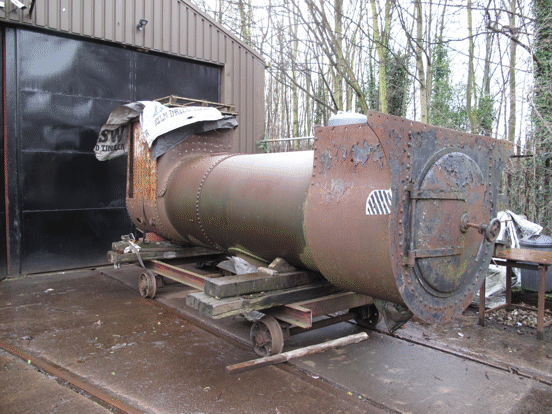
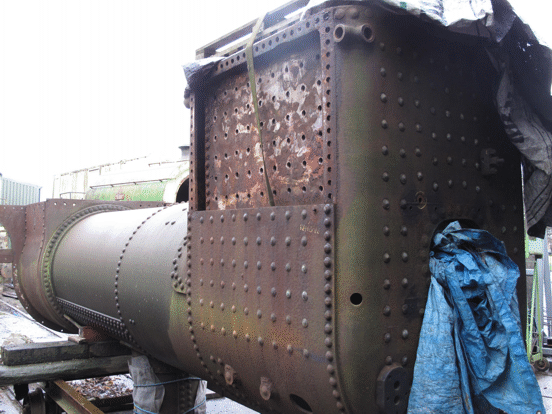
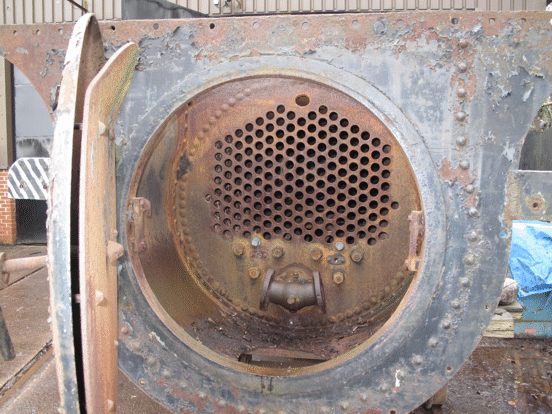
What Needs to be Done
From this point on, the boiler would have to be sent away so that all of the remaining repairs to the boiler could be done by skilled boilermakers, and their work is not cheap. When the repaired boiler would eventually be returned to us then some work would be needed to finish assembling the locomotive, and this would involve some costs, as well as volunteer effort.
Hence, our initial estimate was that completing the overhaul would probably cost about £60,000. This was far more than we could budget for locomotive repairs as part of our normal operation, which is why we started an appeal for funds to enable us to return No. 6 to steam.
Specifically, our aim in this appeal was to raise as much of this sum as we could, in time to have the locomotive back in steam for 2020, when it would be 85 years old. We were looking forward to seeing it running again as it was in the picture below (taken in 1971, when the motorway was still under construction).
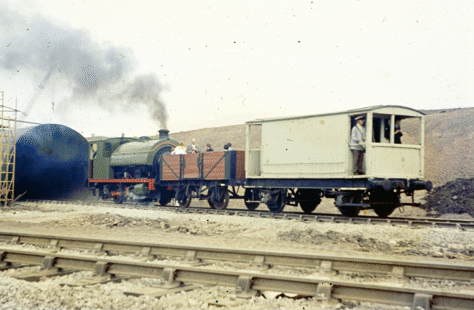
[Picture from the MRT Photo Archive, taken by Ian Smith]
How You Could Have Helped
We have now closed the appeal, but while it was running you could have helped us either by buying one or more of the parts that were needed, or by contributing to the cost of the work involved in doing the repairs. For instance:
- £2.50 would buy us one of the many rivets that were needed for fitting the new firebox plates;
- £20 would buy us a new stay for the firebox (and we needed 153 of them);
- £25 would buy us a new tube for the boiler (and we needed 170 of them);
- £40 would cover the cost of installing one of the new stays in the fire box (and we didn't try to count them!);
- £45 would cover the cost of installing one of the new tubes in the boiler;
- bigger sums than this would help contribute to the specialist work required to replace the fire box side plates.
Current Progress of the Appeal
The amount that this appeal raised will be shown here shortly.
Our thanks to everybody who has contributed so far.
The other pages that give more information about this project are as follows:
- Raising Steam In No. 6, which describes the history of the locomotive and the overhaul that had been started.
- Overhaul of No. 6 Part 1, which describes a lot of the mechanical work that had to be done to finish this overhaul.
- Overhaul of No. 6 Part 2, which describes the remaining work that had to be done, once the boiler had been sent away, in order to complete this overhaul.
More Information
Other pages provide more information about:
Project Phoenix
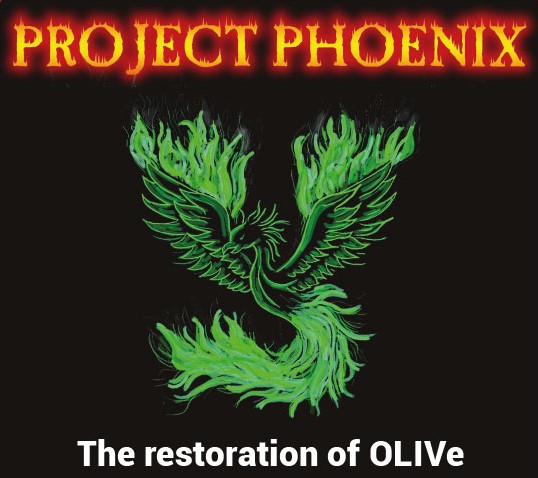
In February 2016 the EM2 Locomotive Society’s unique Railbus DB998901 OLIVe was vandalised in an arson attack at the Middleton Railway in Leeds. The results of this attack are shown in the picture below, taken while the Fire Brigade, who had been called by a neighbouring builders' merchants, were still on site.
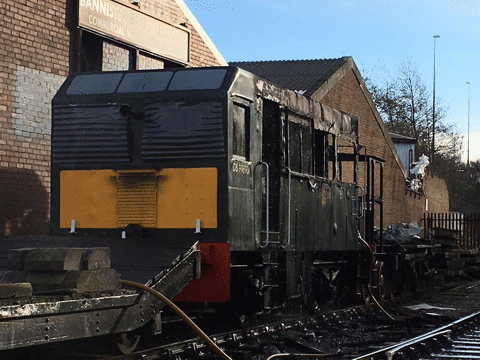
Thanks to the prompt action in calling the Fire Brigade, they had arrived and dealt with the fire before it could spread below floor level. Consequently the mechanical side of the vehicle is relatively untouched, but as can be seen in the picture above damage to the bodywork is extensive, while the interior is completely gutted, as shown in the two pictures below.
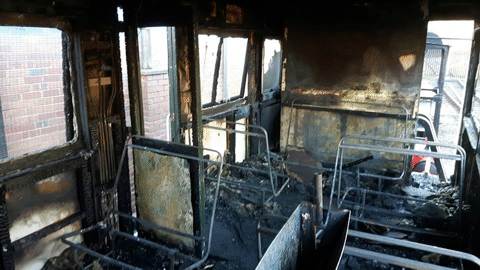
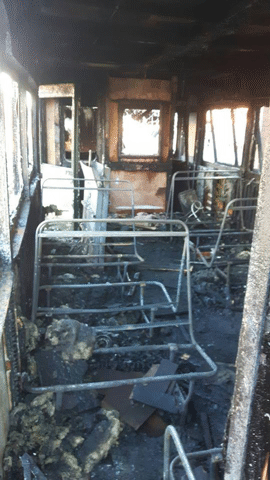
The timing of the attack was particularly unfortunate as during 2015 the vehicle had been transported to the Vintage Carriages Trust workshop at Ingrow where extensive bodywork repairs – funded by the EM2LS - had been undertaken before a repaint into BR green livery and a return to service at Middleton in late 2015. The picture below shows OLIVe in its repainted condition, shortly after she had returned to Middleton.
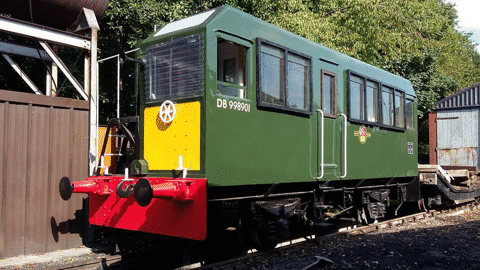
The EM2 Locomotive Society has consulted with the Vintage Carriages Trust and has agreed a restoration plan for this unique survivor. It is intended that OLIVe will be transported to Ingrow in 2017 for professional bodywork repairs and replacement of all doors and windows. The intention is then that she will be returned to Middleton for EM2LS volunteers and supporters to fit out the interior.
Whilst an insurance payment has been received the people who undertook this malicious vandalism have not been caught so the EM2LS – a UK registered charity, who also own locomotive 27000 "Electra" - is now faced with raising an additional amount of around £9,000 to enable all the necessary repair work to take place. The Society had funded the bodywork repairs in 2015 so funds are now low and Olive is in much worse condition now than before the 2015 bodywork overhaul.
The EM2LS has therefore launched Project Phoenix to raise the £9,000 necessary to repair Olive, and bring her back to the condition that she was in at the end of the 2015 repairs. Your help is very much needed, as if this project is unsuccessful then the future is potentially very bleak for this vehicle.
How You Can Help
If you are able to make a donation – however small – then details are available via either of the links below:
- Through the Charities Aid Foundation (accepts payments by card, paypal or CAF accounts); or
- Through the EM2 Locomotive Society's Facebook page (can not accept online payments directly).
Either of the links above will open in a new tab or window in your browser.
Alternatively, you can donate by sending a cheque (payable to EM2 Locomotive Society) to 21 Harper Grove, Idle, Bradford, BD10 8NX. Further information can be obtained from this address or by emailing <
And, of course, if you would like to help contribute practically to the restoration work, theEM2 Locomotive Society will be delighted to hear from you: you can contact them by the same routes.
More Information
Pages about other projects:
- Last Coals to Leeds;
- Raising Steam in No. 6;
- Building a Running Shed;
- Overhauling "Brookes No. 1";
- Conserving "Picton";
Other pages provide more information about:

